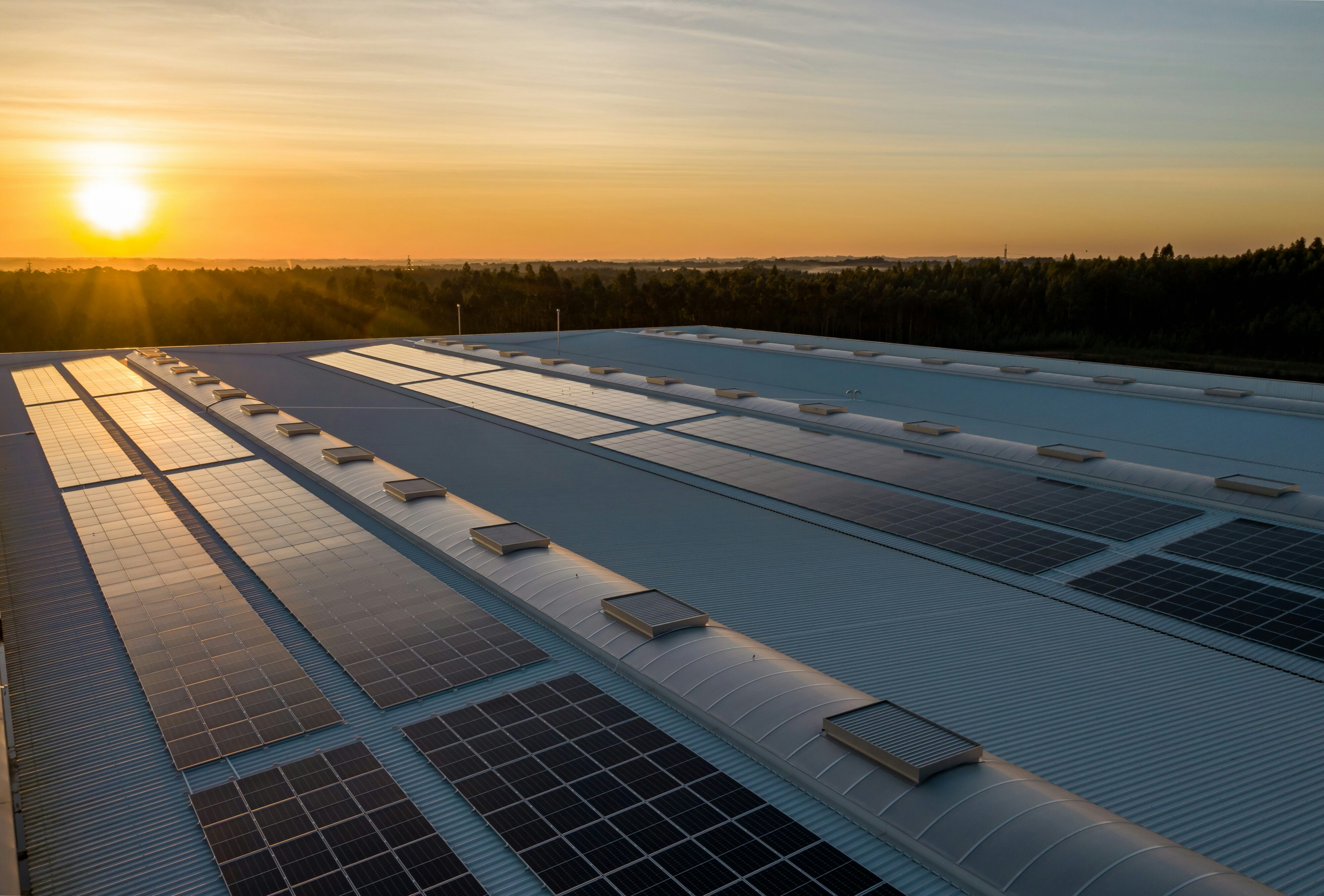
Generate Power with your Solar Windows

New Energy Technologies is developing the first-of-its kind SolarWindow™ technology, which enables see-thru windows to generate electricity by ‘spraying’ their glass surfaces with New Energy’s electricity-generating coatings.
How do we generate electricity on see-thru glass for commercial application in homes, offices, and commercial buildings?
New Energy’s solution is unique to our SolarWindow™ coatings, which:
Make use of the world’s smallest functional solar cells, which measure less than ¼ the size of a grain of rice, and have been shown to successfully produce electricity in a published peer-reviewed study in the Journal of Renewable and Sustainable Energy of the American Institute of Physics;
Are sprayed on to see-thru glass using a novel, patent-pending process recently presented in AZoNano’s (peer-reviewed, Journal of Nanotechnology Online; Dec. 20, 2009), “Nanotechnology Thought Leaders” series;
Do not require expensive high-temperature or high-vacuum production methods, but rather, can be sprayed on to glass at room temperature;
Generate electricity from both natural and artificial light sources, outperforming today’s commercial solar and thin-film technologies by as much as 10-fold; and
Measure less than 1/10th the thickness of ‘thin’ films (only 1/1000th the thickness of human hair).
Our SolarWindow™ technology — capable of generating electricity on see-thru glass windows — is under development for potential application in the estimated 5 million commercial buildings in America (Energy Information Administration) and more than 80 million single detached homes.
Our SolarWindow™ ‘Transparency’ Breakthrough!
In January 2010, New Energy researchers achieved a major ‘transparency’ breakthrough in the development of our SolarWindow™ technology, capable of generating electricity on see-thru glass.
For the first time ever, scientists successfully developed and integrated transparent, environmentally-friendly compounds onto glass in order to collect the electricity generated on our SolarWindow™ — an important function. To-date, the collection of electricity was possible only through the use of a metal contact, which blocked visibility and limited transparency.
Until our breakthrough, one of the biggest obstacles faced by researchers developing New Energy’s SolarWindow™ technology has been the presence of metal, an opaque material which blocks all visibility and prevents light from passing through glass. Eliminating metal has proved especially challenging since the metal component acts as the negative ‘polar contact’.
This important breakthrough replaces visibility-blocking metal with environmentally-friendly and more transparent compounds. These compounds now function as the negative polar contact and collect electricity from New Energy’s SolarWindow™.
“We have successfully replaced the metal contact component in our SolarWindow™ with non-metallic compounds, and in so doing, achieved significantly greater transparency, a key factor in advancing our technology along the commercial product development path. The importance of this breakthrough cannot be overstated.”
– Meetesh V. Patel, President & CEO
Source: New Energy Technologies, Inc.
Press Release, January 4th, 2010
Our Unique Ability to ‘Spray’ Solar Cells Onto Glass;
A Low-Cost, High-Speed Solution
In January 2010, scientists developing New Energy’s SolarWindow™ unveiled a novel, patent-pending process for ‘spraying’ solar cells and their related components onto glass – a technical achievement presented in AZoNano’s (peer-reviewed, Journal of Nanotechnology Online; Dec. 20, 2009), “Nanotechnology Thought Leaders” series.
Once scaled-up for use in commercial-scale production, researchers anticipate the ability to spray solar coatings directly onto New Energy’s first-of-its-kind see-thru SolarWindow™, currently under development, could provide significant commercial production advantages over today’s thin-films.
Conventional solar films are typically manufactured using expensive and slow manufacturing methods which rely on high-temperature and finicky ‘vacuum deposition’ processes for depositing solar materials onto substrates; the resultant products are simply too thick to allow for transparency, an important consideration in the development of a commercially viable solar-powered glass window.
“In commercial terms, this new spray technology could translate into important manufacturing advantages for our SolarWindow™, including significant cost-savings, high-speed production, and room-temperature deposition – common barriers to commercial success for innovative solar technologies.”
– Meetesh V. Patel, President & CEO
Source: New Energy Technologies, Inc.
Press Release, January 11, 2010
The ‘Organic’ Edge;
Our ‘Ultra-Small’ Solar Cells Deliver Big Advantages
Organic solar cells, or organic photovoltaics (OPV) have received the attention of the solar energy community as a promising low-cost alternative to typical PV (photovoltaic) solar cells used in today’s solar industry to harness the sun’s energy for renewable electricity.
Solar cells that are currently available are largely made of silicon wafers, an expensive and brittle material that can limit their commercial usability. Other newer generation, lower-cost, flexible thin film solar materials such as amorphous silicon, copper-indium-gallium-selenide, and cadmium telluride, often require high-vacuum and high-temperature production techniques, and are many times thicker than New Energy’s ultra-small solar cells. This generally limits the application of such thin films primarily to stainless steel, an expensive substrate material with limited prospects of delivering transparency.
New Energy’s SolarWindow™ technology makes use of ultra-small organic solar cells, which:
Allow for the fabrication of transparent solar arrays on a broad range of substrate materials such as glass, plastic, and even paper;
Are made of natural polymers which can be dissolved into liquid for easy application that does not require expensive and complicated high-temperature or high-vacuum production techniques common to other solar coatings; and
Organic solar cells can be manufactured in a variety of ways, including screen printing, ink-jet printing and spraying.
Generating Electricity from Artificial Light?
SolarWindow™ Surpasses Solar & Thin Film, Ten-Fold
In June 2009, new tests of our ultra-small solar cells for use in New Energy’s SolarWindow™ demonstrated substantially superior performance over current thin-film and solar photovoltaic technologies at generating electricity from artificial light – an important advantage over conventional solar technologies which are limited by their capacity to function well where exposure to direct sunlight is available.
“One of the biggest issues with today’s solar products is their dependency on direct sunlight, which our cells have demonstrated the potential capacity to overcome.”
– Meetesh V. Patel, President & CEO
Source: New Energy Technologies, Inc.
Press Release, June 24, 2009
New Energy’s solar cells generate electricity not only from the visible radiation found in sunlight but also by using the visible light found in artificial illumination, such as the fluorescent lighting typically installed in offices and commercial buildings.
In a series of experiments, researchers repeatedly tested New Energy’s ultra-small solar cells on a 1”x1” substrate against today’s popular solar materials for their capacity to produce electricity under varying artificial light conditions, mimicking the levels of light exposure in homes and commercial offices. In every case, our SolarWindow™ solar cells, the smallest reported organic solar cells of their kind in the world, exponentially outperformed all of the conventional materials tested.
Under normal office lighting conditions, without the benefit of outside natural light from windows, New Energy’s ultra-small solar cells produced:
Almost 2-fold greater output power density than monocrystalline silicon, an established commercial solar cell material;
More than 8-fold greater output power density than copper-indium-selenide, known for its high optical absorption coefficients and versatile optical and electrical characteristics; and
More than 10-fold greater output power density than flexible thin-film amorphous-silicon, a popular ‘second-generation’ solar thin-film material.
While the majority of today’s solar cells can only be installed where direct sunlight is available, New Energy’s cells could be installed close to any source of visible light.
The First-Of-Its-Kind Organic Solar Array
Our SolarWindow™ technology utilizes an organic solar array composed of a series of twenty ultra-small solar cells measuring less than ¼ the size of a grain of rice each. They are fabricated using environmentally-friendly hydrogen-carbon based materials, and successfully produce electricity, as demonstrated in a published peer-reviewed study in the Journal of Renewable and Sustainable Energy of the American Institute of Physics.
New Energy’s organic solar array has:
The same desirable electrical properties as silicon, yet boasts a considerably better capacity to ‘optically absorb’ photons from light to generate electricity, and achieves transparency through the innovative use of conducting polymers;
Superior optical absorption properties inherent to New Energy’s ultra-small solar cells, enabling development of an ultra-thin film, only 1/1000th the thickness of a human hair, or 1/10th of a micrometer; and
A key advantage over conventional thin films which are exponentially thicker, measuring several micrometers thick, thus inhibiting transparency.
There are nearly 5 million commercial buildings in America, according to the Energy Information Administration, and more than 80 million single detached homes. New Energy’s SolarWindow™ technology is under development for commercial application in such buildings.
www.newenergytechnologiesinc.com
You can learn more about Solar Energy and Photovoltaic technology through the Department of Energy U.S. Energy Information Administration, and the National Renewable Energy Laboratory:
http://www.energy.gov/energysources/solar.htm
http://www.eia.doe.gov/
http://www.nrel.gov/learning/re_solar.html






















